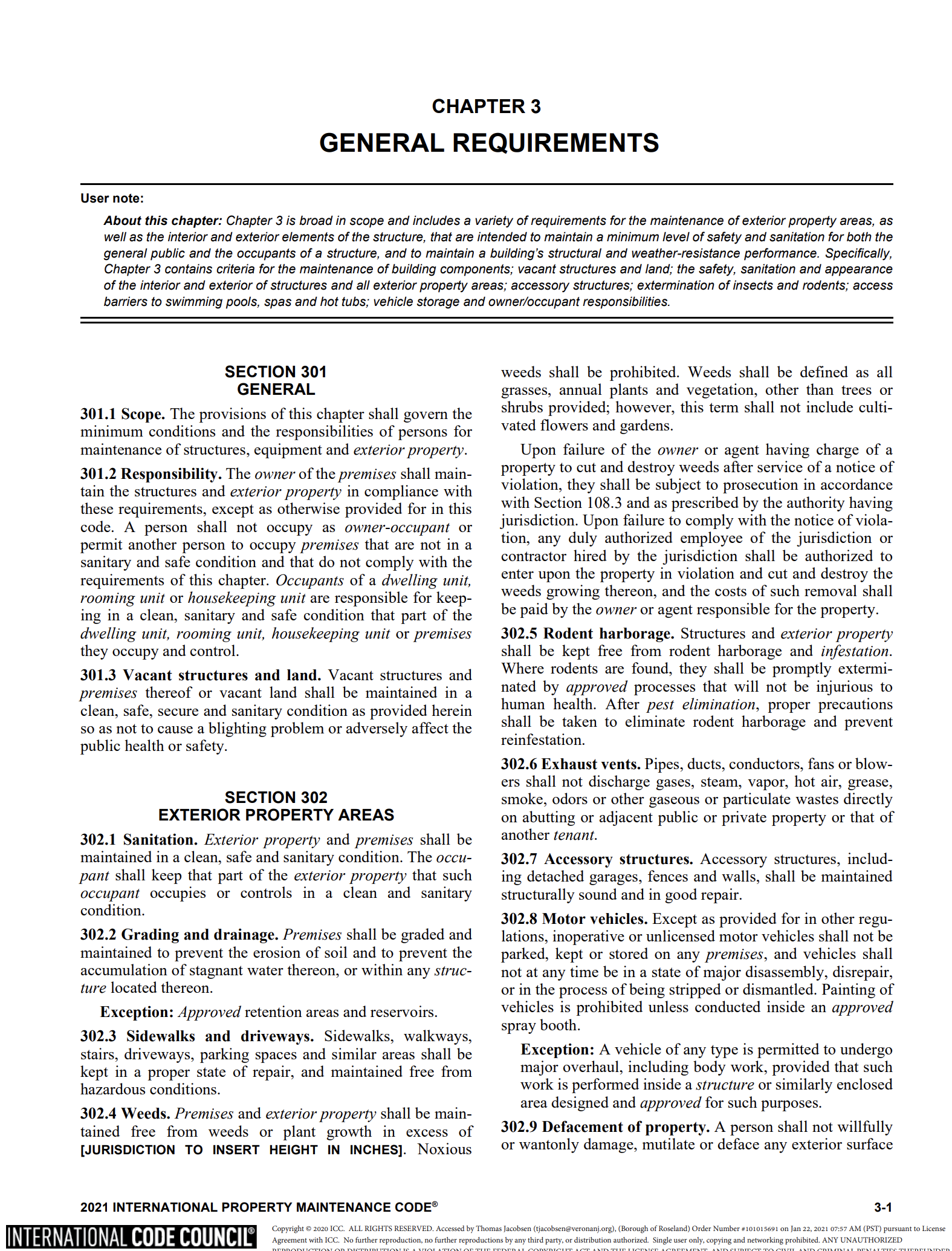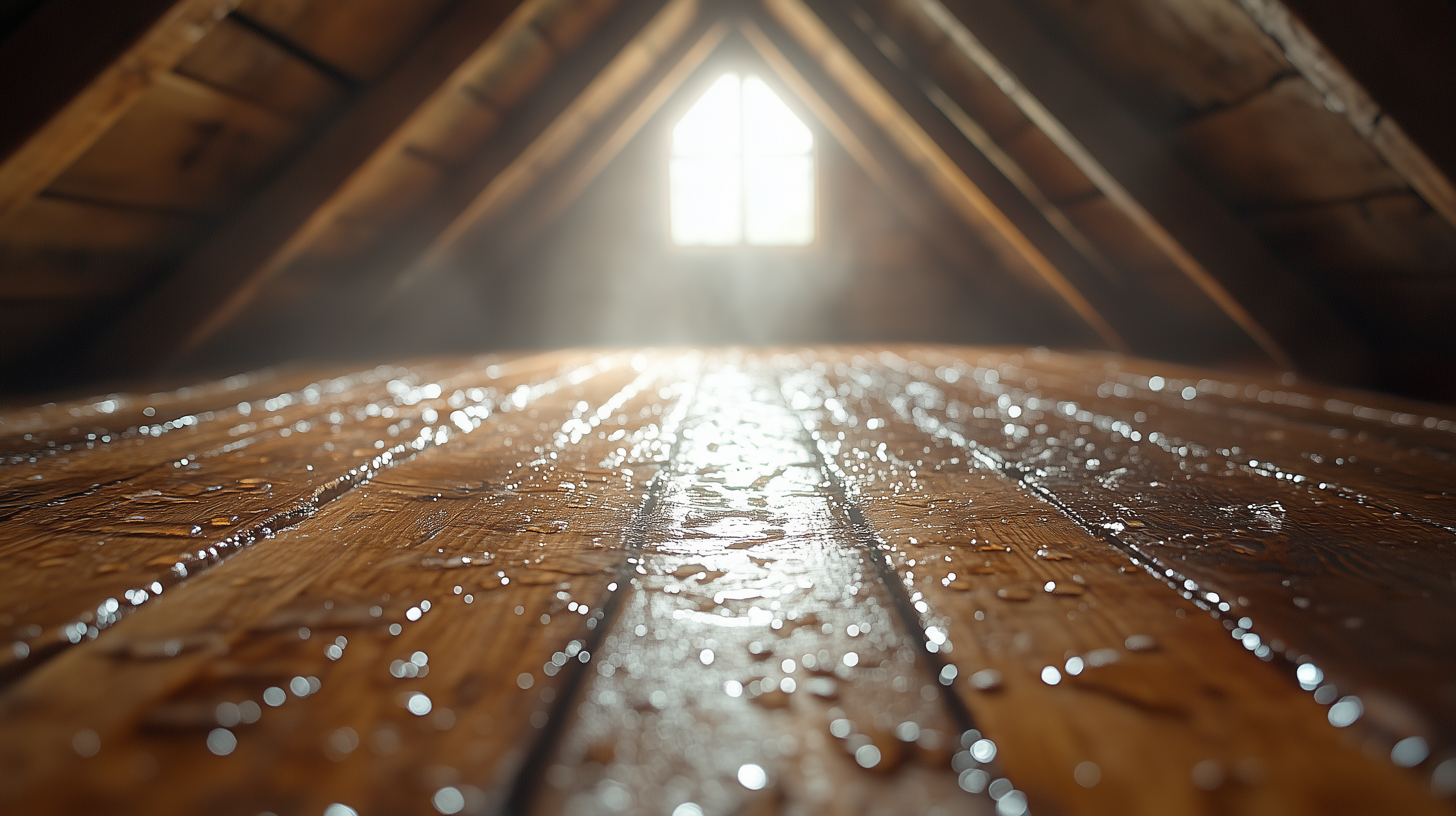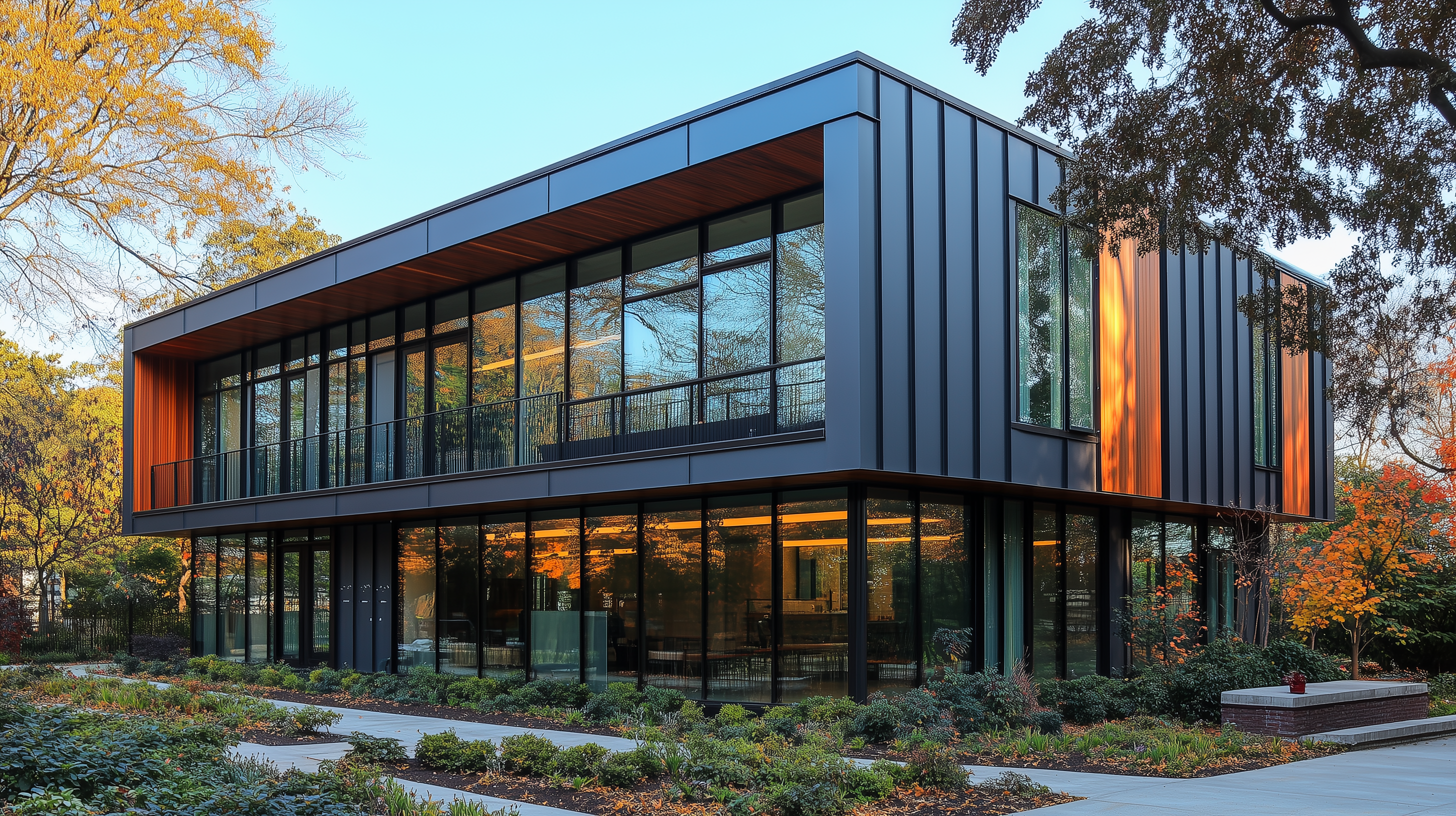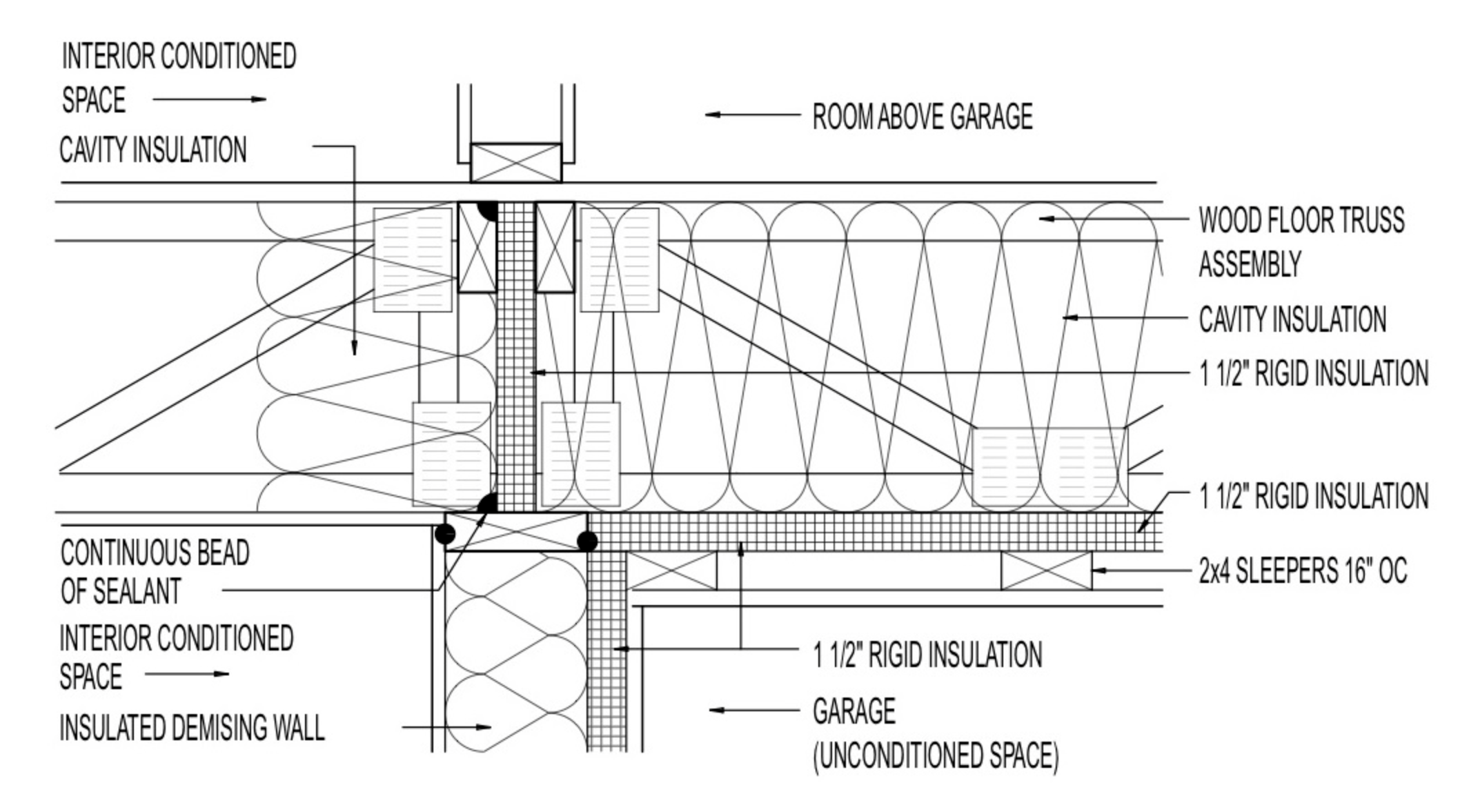Introduction
In the realm of property management and maintenance, Chapter 3 of the 2021 International Property Maintenance Code (IPMC) provides critical guidelines. This chapter encompasses a broad range of topics aimed at maintaining a minimum level of safety, sanitation, and structural integrity for both the public and occupants of a property. Below, we’ll dissect the key sections and what they mean for property owners, particularly those who have filed an insurance claim for property damage and are seeking restoration services.
Key Sections
Section 301: General
This foundational section outlines the scope of the chapter and places the responsibility for maintenance squarely on the shoulders of the property owner. It emphasizes that premises must be kept in a sanitary and safe condition.
Section 302: Exterior Property Areas
Under this section, the exterior property must be clean, safe, and sanitary. It also covers specifics like grading for drainage, maintenance of sidewalks, and the prohibition of weed growth beyond a certain height.
Section 303: Swimming Pools, Spas, and Hot Tubs
This section mandates that such water features must be maintained in a clean, sanitary condition. They must also be enclosed by a fence or barrier of at least 48 inches in height for safety.
Section 304: Exterior Structure
Arguably one of the most critical sections, this part focuses on the exterior of the structure. It outlines requirements for various structural elements such as walls, roofs, and decorative features, insisting they must be maintained in good repair and be structurally sound.
- 304.1 General: The exterior of any building should be in good repair, structurally sound, and sanitary to ensure public safety.
- 304.2 Protective Treatment: Exterior surfaces must be maintained, including protective treatment against decay and rust.
- 304.3 Premises Identification: Buildings should have legible and visible address numbers.
Structural and Safety Concerns
- 304.1.1 Unsafe Conditions: Lists 13 types of unsafe conditions that need immediate attention, such as issues with structural strength, anchorage, deterioration, etc. Two exceptions are noted for approved methods or if demolition is approved.
- 304.1.1.1: Structural Members – Conditions where the structural integrity is compromised.
- 304.1.1.2: Anchorage – Inadequate anchorage of floor, roof, walls, and columns.
- 304.1.1.3: Limit State – When structures or components reach their limit state.
- 304.1.1.4: Siding and Masonry – Joints that are not weather-resistant or water-tight.
- 304.1.1.5: Structural Deterioration – Evidence of deteriorated structural members.
- 304.1.1.6: Foundation Systems – Issues related to foundation support, anchoring, and condition.
- 304.1.1.7: Exterior Walls – Walls that are not anchored, supported, or in good condition.
- 304.1.1.8: Roofing – Defective roofing that admits rain or lacks proper drainage.
- 304.1.1.9: Flooring – Flooring defects that affect its serviceability.
- 304.1.1.10: Decorative Features – Issues with improperly anchored decorative elements.
- 304.1.1.11: Overhangs – Overhang extensions or projections that are not properly anchored.
- 304.1.1.12: Exterior Stairs and Decks – Stairs, decks, and related elements that are not structurally sound.
- 304.1.1.13: Chimneys and Towers – Chimneys and similar elements that are not structurally sound.
Specific Component Guidelines
- 304.4 to 304.19: Provides detailed requirements for maintaining structural members, foundation walls, exterior walls, roofs, drainage, decorative features, stairways, chimneys, windows, doors, and security features.
- 304.4: Structural Members – Maintenance of structural elements.
- 304.5: Foundation Walls – Condition and maintenance of foundation walls.
- 304.6: Exterior Walls – Maintenance and condition of exterior walls.
- 304.7: Roofs and Drainage – Maintenance of roofs and drainage systems.
- 304.8: Decorative Features – Maintenance of decorative features like cornices.
- 304.9: Overhang Extensions – Maintenance of elements like canopies and awnings.
- 304.10: Stairways and Decks – Maintenance of outdoor stairways, decks, etc.
- 304.11: Chimneys and Towers – Maintenance of chimneys and cooling towers.
- 304.12: Handrails and Guards – Condition and stability of handrails and guards.
- 304.13: Windows and Doors – Maintenance of window, skylight, and door frames.
- 304.13.1: Glazing – Maintenance of glazing materials.
- 304.13.2: Openable Windows – Functionality of windows that can be opened.
- 304.14: Insect Screens – Requirements for insect screens.
- 304.15: Doors – Maintenance of exterior doors.
- 304.16: Basement Hatchways – Maintenance and security of basement hatchways.
- 304.17: Basement Window Guards – Requirements for basement window protection.
- 304.18: Building Security – Security features for doors and windows.
- 304.18.1: Doors – Locking mechanisms for doors.
- 304.18.2: Windows – Locks for windows.
- 304.18.3: Basement Hatchways – Security for basement access.
- 304.19: Gates – Maintenance of exterior gates.
Security
- 304.18 Building Security: Specifies security requirements for doors, windows, and basement hatchways.
- 304.19 Gates: Maintenance and security guidelines for exterior gates.
Exceptions
- Specific exceptions and alternative approved methods are also noted in various subsections.
The section is designed to ensure that the exterior of a building is maintained in a way that ensures the safety, health, and welfare of the public. It covers a broad range of topics from the structural integrity of the building to safety and aesthetic considerations.
Implications for Property Owners
- Routine Checks: Property owners must conduct regular inspections to ensure the building complies with these guidelines.
- Emergency Repairs: In the event of a storm, tornado, or other natural disasters, the property must be restored to meet these standards. This is especially relevant for those who have filed insurance claims for property damage.
- Legal Compliance: Failure to comply can result in legal ramifications, including fines and possible eviction notices.
How Allied Emergency Services Can Help
- Consultation: Our team can assess the damage and scope of work required to ensure compliance with IPMC Chapter 3.
- Restoration: We specialize in storm damage restoration and emergency services to quickly bring your property up to code.
Conclusion
Adhering to the guidelines set forth in the 2021 IPMC Chapter 3 is not just a legal obligation but also a commitment to safety and quality. Allied Emergency Services offers a one-stop solution for ensuring your property is compliant, safe, and well-maintained.
For more personalized guidance, consult with engineers and local building codes specific to your location. For immediate service or consultation, you may contact us at Allied Emergency Services, INC.
Contact Information:
- Phone: 1-800-792-0212
- Email: Info@AlliedEmergencyServices.com
- Location: Serving Illinois, Wisconsin, and Indiana with a focus on the greater Chicago area.
If you require immediate assistance or have specific questions, our human support is readily available to help you.
Disclaimer: This article is intended for informational purposes only. For professional advice, consult experts in the field










